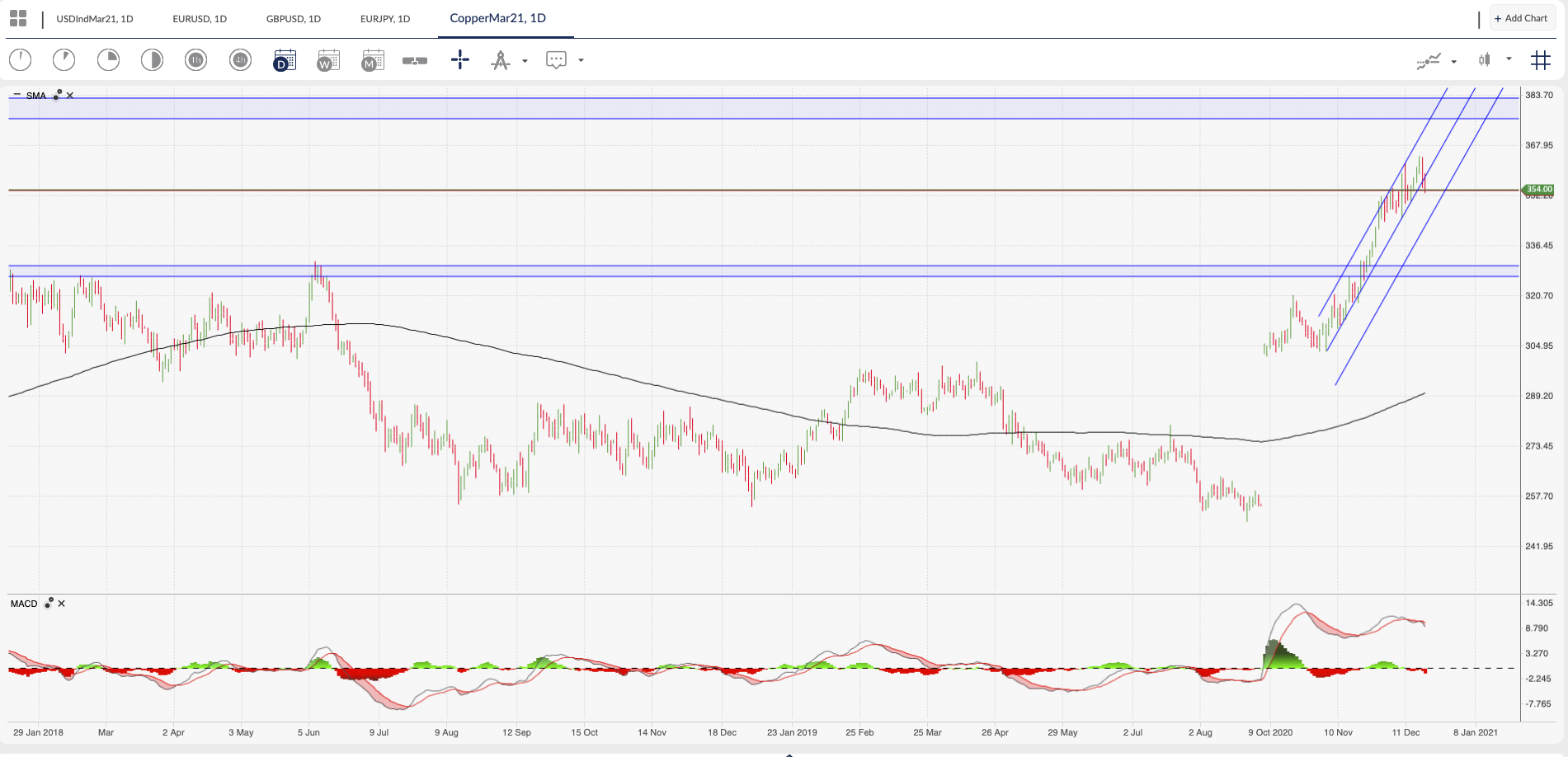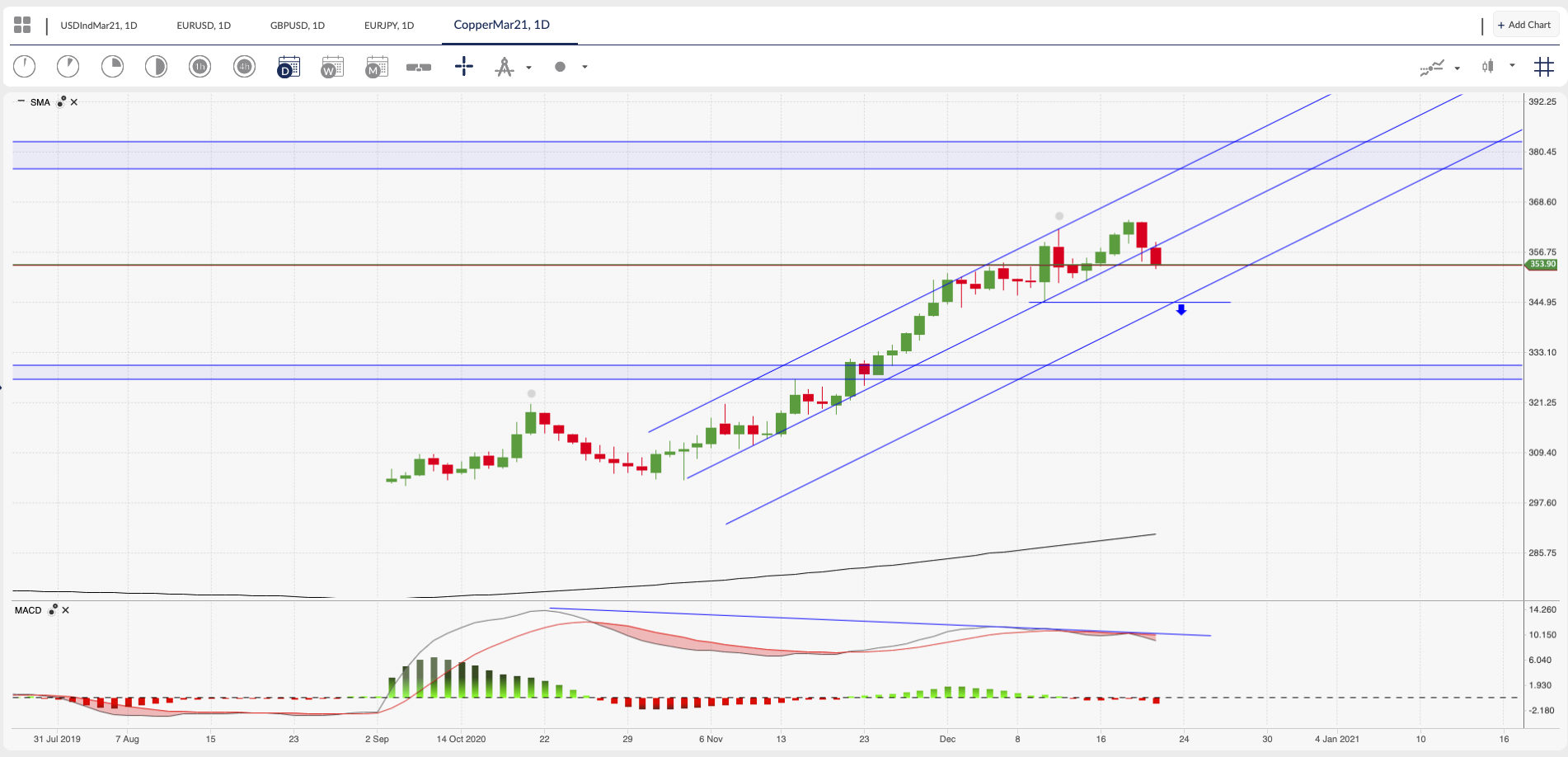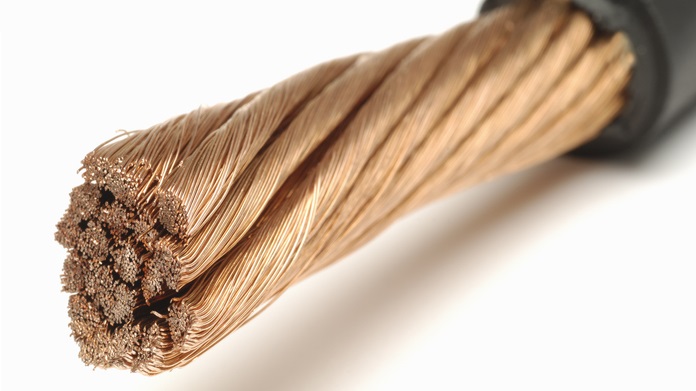COMEX copper future prices are at levels not seen since 2013. Having found support during the March 2020 low at the worst of the coronavirus pandemic lockdowns, the Copper price run-up into the latter end of 2020 has been a non-stop bull train for the industrial barometer, fuelled by optimism over vaccines and the proceeding economic recovery in Q3 2020.


Looking at the March 21 contract on ActivTrader, we see that the price action was contained within a tight rising channel from October and the last 48 hours has been enough of a bearish move for the price action to indicate a reversal in the recent bullish momentum.
Using a COMEX copper continuous chart there is a technical triangle consolidation pattern which terminated at the start of 2013, and when the price broke lower, it initiated a fall in prices that lasted 2 years. This would suggest that traders have recently found a level where the price of copper is sufficiently expensive enough to take some profits and maybe do some price discovery lower, to see if there are any buyers willing to take this commodity towards or above the 2011 highs.


The double top price action in 2018 on the ActivTrader Copper Mar21 chart, would be a great place for old resistance to form a supporting base, with the 200 sma rising to meet this potential fall in the price action. The divergence between rising highs in price versus declining highs on the MACD, could indicate that the grind higher is also about to break lower.
Looking around the analysts’ reports for signs of supply and demand, global daily use of copper is running at approx. 55,000 tonnes a day and the warehousing of copper is around 72,075. This could mean there is a potential for demand to outstrip supply in the short term if demand was to spike. The rise of the electric vehicles will see an increased need for metals like copper and the latest reports from Fitch Solutions say that copper production will increase by 6.9% year-on-year in 2021, due to multiple new projects coming online after COVID-19 lockdowns had reduced output during 2020.
China is the greatest consumer of the metal with Chile being the largest exporter and with China’s leadership announcing they are going to target an 8% GDP in 2021 there is a lot of potential for industrial activity to need a ramp up in imports of metals and commodities.
The fear is still that the coronavirus and measures taken by countries to control the pandemic could lead to further disruptions in future trade and economic growth, but China has been administering their vaccine and looking to keep their economy open and growing.
Looking at the price action, if the low from 10th December 2020 can hold that averts a steeper decline, but my base case scenario is that we have seen a break of the bullish momentum and profit taking, plus price discovery, is to take place until we get back down to 328 or possibly 315 levels. From there, it would make sense that prices rise again on the increased demand, but we should be mindful of the increase in supply if mines and countries open up and start exporting at higher levels.




